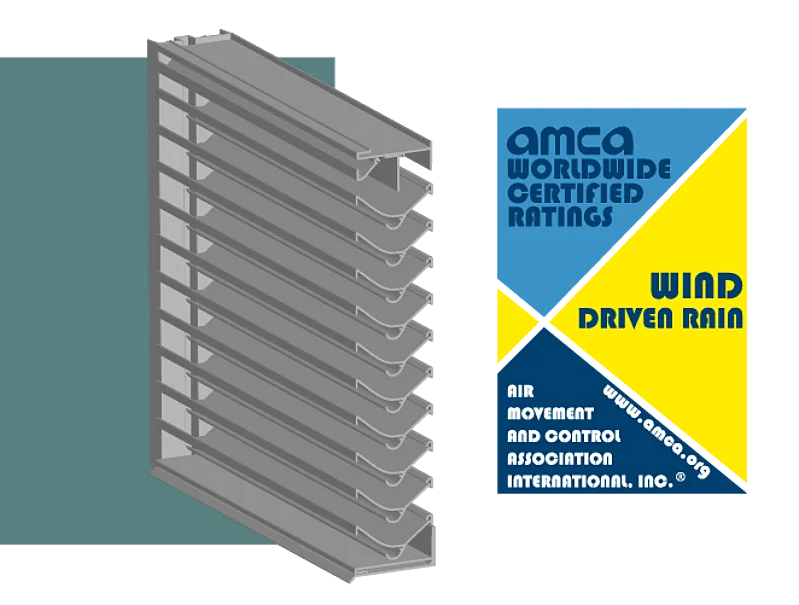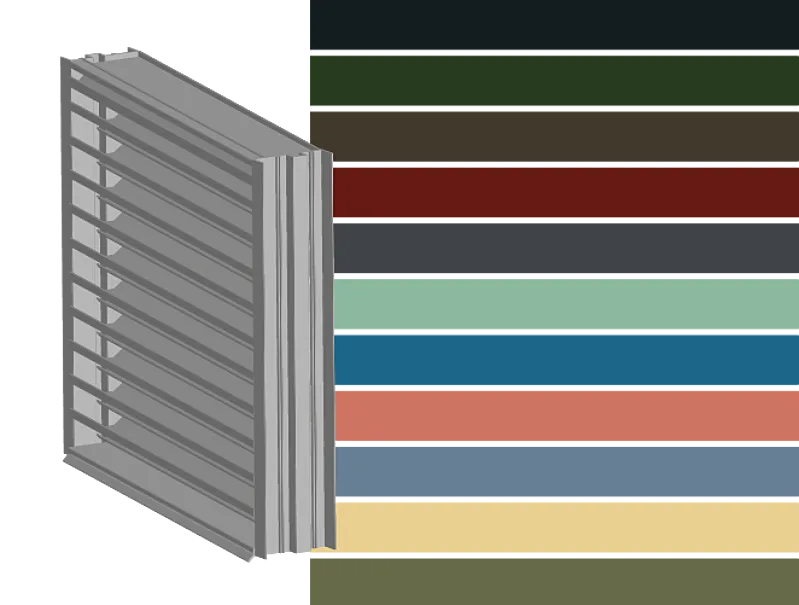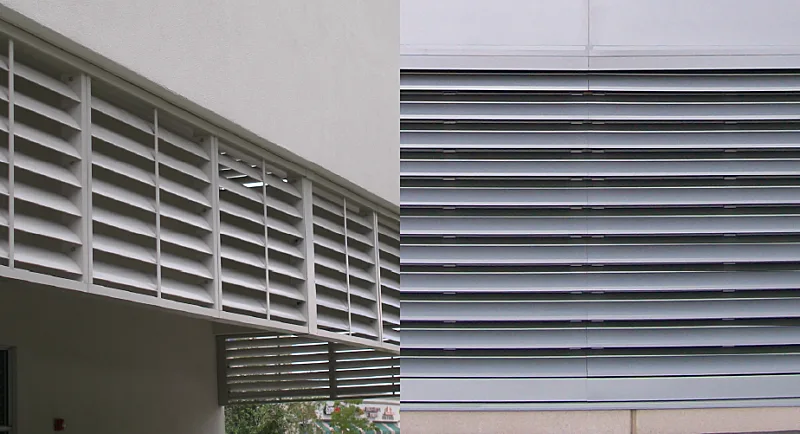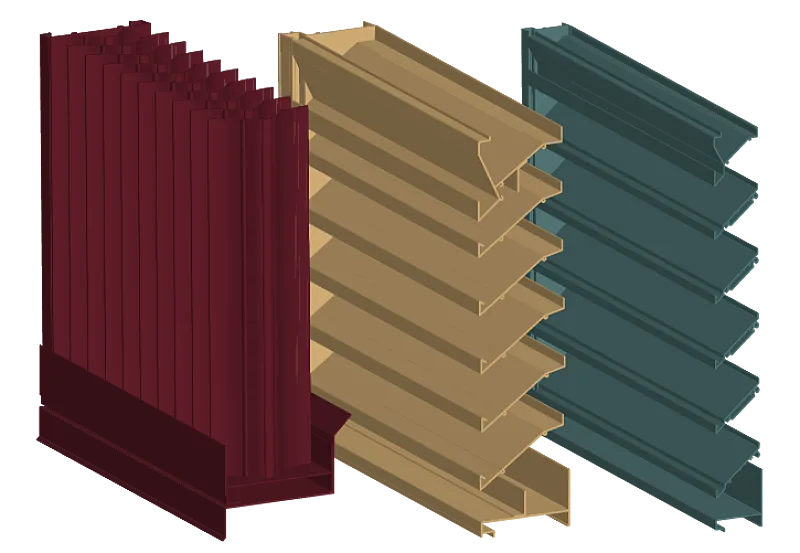Louver design is deceptively simple. Make sure it fits the opening, with a little extra room for thermal expansion. It’s that easy, right? Sizing is important for louver design, but there are many other details to consider. Will the louver meet your project’s requirements? Will it provide enough airflow? Does it provide enough rainfall protection?
These are important questions to answer, but there is one more question that we would like to focus on. Will the louver fit in with the project’s aesthetic?
1 – Meet Requirements First

First and foremost, the louver should meet requirements. Check the needs of the application before making your selection. If an application calls for a wind driven rain louver, then you need to fill that opening with the right louver type. Each louver should protect the interior from water damage year-round. For projects along the coastline, you will need hurricane louvers for extreme weather protection.
It may seem overwhelming, but don’t worry. We broke down storm resilience testing in our previous article. Here are some more articles to help make sense of louver requirements:
- Louver Design 103 – Severe Weather Testing
- Three Reasons to Choose Wind Driven Rain
- What to Know about Water Penetration Testing for Louvers
Louvers that receive testing will have a seal or listing label, along with test data on their submittals. Look for louvers with the right testing, then check the data on the submittal. Your building will use more than one kind of louver. Different areas of the building will have unique requirements.
With your requirements met, you can start thinking about aesthetics.
2 – Apply a Finish

Finishes are the easiest and most effective way to enhance your louvers. A simple clear coat can add a shine to bare metal. Anodizing applies subtle shades to the metal, so that it maintains its metallic look. Liquid paints add color to the louver while providing an extra layer of protection from the elements.
Any louver can receive a finish, but most finish types work best on extruded aluminum louvers. For instance, anodizing works best on aluminum louvers because of the process used to anodize metal. The porous nature of aluminum provides an excellent medium for the anodizing process.
Plus, paint finishes adhere better to aluminum louver. AWV offers color matching on our paint finishes, so you get the perfect shade every time. Just provide a color swatch of what you’re looking for, and we will make sure the louver matches. Finishes provide a world of customization options, so that each louver fits your design. There are ways to make your louvers stand out or fit in with the rest of the building.
Even if your project requires a specific louver in an opening, you still have options to make it work with the overall aesthetics.
3 – Consider Recessed and Hidden Mullions

Mullions are the dividing line between two sections of a louver. Larger assemblies are built from individual louver panels. For example, you could fill a 120” x 60” opening with two 60” x 60” louver panels. There will be a vertical mullion between these two panels. Mullions do more than create vertical lines. They provide structural support between louver sections.
Luckily, there are ways to hide these lines. Many louvers will offer a recessed mullion or hidden mullion option for multi-panel assemblies.
For recessed mullions, the blades of each louver panel will meet over the mullion. The mullion is still visible behind the blade, although it isn’t as pronounced as a discrete mullion. Hidden mullions, also known as architectural mullions, use specialized blade support along the back of each blade to join the two panels together. The blades are closer together with this option, so that they form a continuous line across the louver’s face.
Manufacturers will require discrete mullions for extra wide assemblies, typically assemblies of twelve feet wide or more. Consult the manufacturer’s literature for specific details. Hidden mullions help maintain an uninterrupted look across the face of the louver.
If your goal is long, straight lines, then consider adding a hidden mullion to your larger louvers.
4 – Consider All Louver Types

There is more to louvers than drain features and severe weather protection. Louvered products can do a lot for your building’s design. Their straightforward design makes them highly versatile. Cordon off areas and establish a private space with grilles and louvered fences. Sight proof blades can help block sightlines into a space, creating a space that is both open to guests and closed off from onlookers.
Are there rooms in your building that receive too much sunlight? Add sunshades along the top to cut down on radiant heat. Learn how with this blog article. You have an opening that needs a certain something. Why not fill it with an architectural grille? Grilles are lightweight louvers that come in many different unique designs.
Apply a finish to it and create a work of art on your wall.
Louvers are an important part of your building. They are also versatile. Even if a louver is required in an opening, you have options to make it stand out.
AWV and Louvers
Start your next project with louvers built for your project. At AWV, we build everything to match your specifications. Choose from our wide range of louver models, then add a finish to make them stand out. Contact AWV today. Let's work together on your next project.






